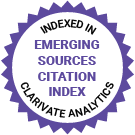JMIR Research Protocols
Protocols, grant proposals, registered reports (RR1)
Editor-in-Chief:
Amy Schwartz, MSc, Ph.D., Scientific Editor at JMIR Publications, Ontario, Canada
Impact Factor 1.4 CiteScore 2.4
Recent Articles

In recent years, the prevalence of cardiometabolic disease (CMD) in African American women has risen; the risk also increases with age, in comparison to men. Evidence demonstrates that stressful life events, including experiences of racism and perceived discrimination, contribute substantially to inflammatory diseases, such as CMD. Despite this evidence, few evidence-based interventions are available to assist individuals from minoritized communities in coping with the chronic stress related to their racial or ethnic identity.

Tailored text messaging is a low-cost mobile health intervention approach shown to effectively improve self-care behaviors and clinical outcomes for patients with chronic cardiometabolic conditions. Given the ubiquitous nature of mobile phones, text messages have the potential to reach a large audience. However, automating and disseminating tailored text messages to large populations at low cost presents major logistical challenges that serve as barriers to implementation.

Locomotive syndrome (LS) is a condition in which muscle weakness and reduced motor function due to musculoskeletal disorders cause reduced mobility and physical function. In Japan, musculoskeletal disorders are the most frequent reason for requiring home support or nursing care, and the prevention and amelioration of LS are thus being emphasized. However, it is difficult for older people to make a habit of exercise therapy, which is the mainstay of LS treatment. We investigated whether digital therapy could (1) lead to behavioral change in older people and (2) prevent or improve LS in older people.

End-stage kidney disease (ESKD) or kidney failure is a condition where the kidneys lose the ability to function. African American individuals are 4 times as likely to develop ESKD compared to White American individuals. In addition, African American patients are less likely to have an optimal dialysis start and to choose renal replacement therapy modalities that align with their goals and values. Our prior work shows that culturally tailored, in-person education improves patient outcomes. This is the foundation for our innovative intervention using an African American virtual patient educator as an option for hospitalized patients with chronic kidney disease (CKD).

An individual education plan (IEP) is a key element in the support of the schooling of children with special educational needs or disabilities. The IEP process requires effective communication and strong partnership between families, school staff, and health care practitioners. However, these stakeholders often report their collaboration as limited and difficult to maintain, leading to difficulties in implementing and monitoring the child’s IEP.

Nonmedical use of prescription opioids remains a critical public health issue; 8.5 million people in the United States misused opioids in 2022. Most people obtain prescription opioids for misuse from family or friends. Thus, facilitating secure storage and disposal of opioid medications during and after treatment is needed to prevent medication diversion and subsequent misuse.

There has been a surge in mental health apps over the past few years. While these have great potential to address the unmet mental health needs of the population, the recent proliferation of mental health apps in the commercial marketplace has raised several concerns, such as privacy, evidence-based, and quality. Although there is mounting research on the effectiveness of mental health apps, the majority of these are not accessible to the public and most of those available have not been researched. Despite the rapid growth of the digital health market in India, there are no comprehensive reviews of publicly available mental health apps for Indian users. Hence it becomes important to review mental health apps freely available to potential end users in terms of their scope, functions, and quality.

Occupational cancer and acute cardiac events are the leading causes of death among firefighters. Increased exposure to toxicants on the fire ground, such as polycyclic aromatic hydrocarbons, benzene, and per- and poly-fluoroalkyl substances (PFAS), has been linked to certain cancers, cardiovascular disease, accelerated epigenetic aging, and other adverse health effects. PFAS are a major concern because they are persistent, can bioaccumulate, and are present in several firefighting tools. Compared to the general population, firefighters have elevated serum levels of some types of PFAS. A randomized clinical trial in Australian firefighters found that routine blood and plasma donation for 1 year led to decreased serum PFAS levels, although health outcomes were not directly measured in that study.

Mental health needs in the community surged during the pandemic, with concerning reports of increased negative mood symptoms among youth. At the same time, preventive psychoeducational interventions were insufficient within frontline youth mental health services in Hong Kong, and research specifically addressing youth loneliness remained limited on an international scale. Given the association between loneliness and other mental health symptoms, psychoeducational programs that empower adolescents to cope with emotions may help address both the research gap and local demand. As such, Tuned In, a previously validated intervention program originally developed in Australia, was introduced to the local context. Cultural adaptations and an added focus on loneliness were incorporated into the project to enhance its acceptability and test its effectiveness.

Individuals who are socioeconomically disadvantaged have high smoking rates and face barriers to participating in smoking cessation interventions. Computer-tailored health communication, which is focused on finding the most relevant messages for an individual, has been shown to promote behavior change. We developed a machine learning approach (the Adapt2Quit recommender system), and our pilot work demonstrated the potential to increase message relevance and smoking cessation effectiveness among individuals who are socioeconomically disadvantaged.

Wearable activity monitors are increasingly used to characterize physical behavior. The development and validation of these characterization methods require criterion-labeled data typically collected in a laboratory or simulated free-living environment, which does not generally translate well to free-living due to limited behavior engagement in development that is not representative of free living.














